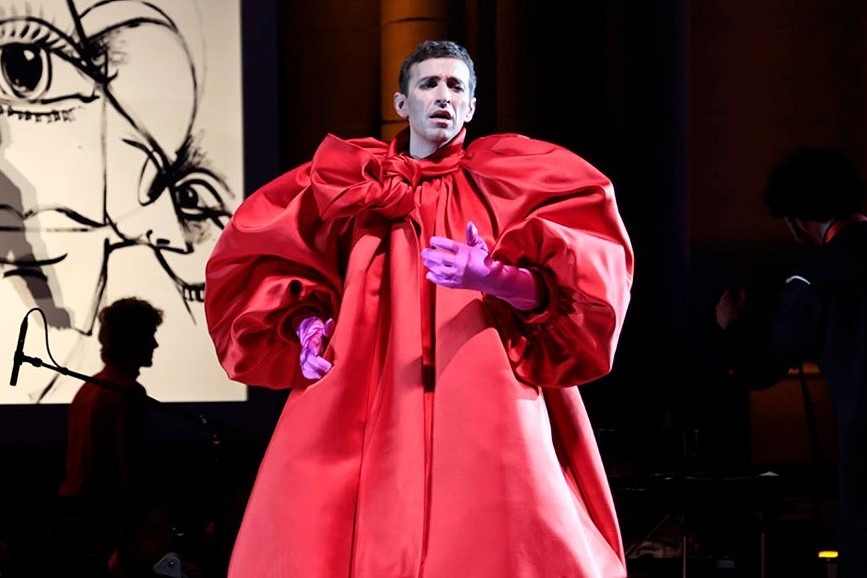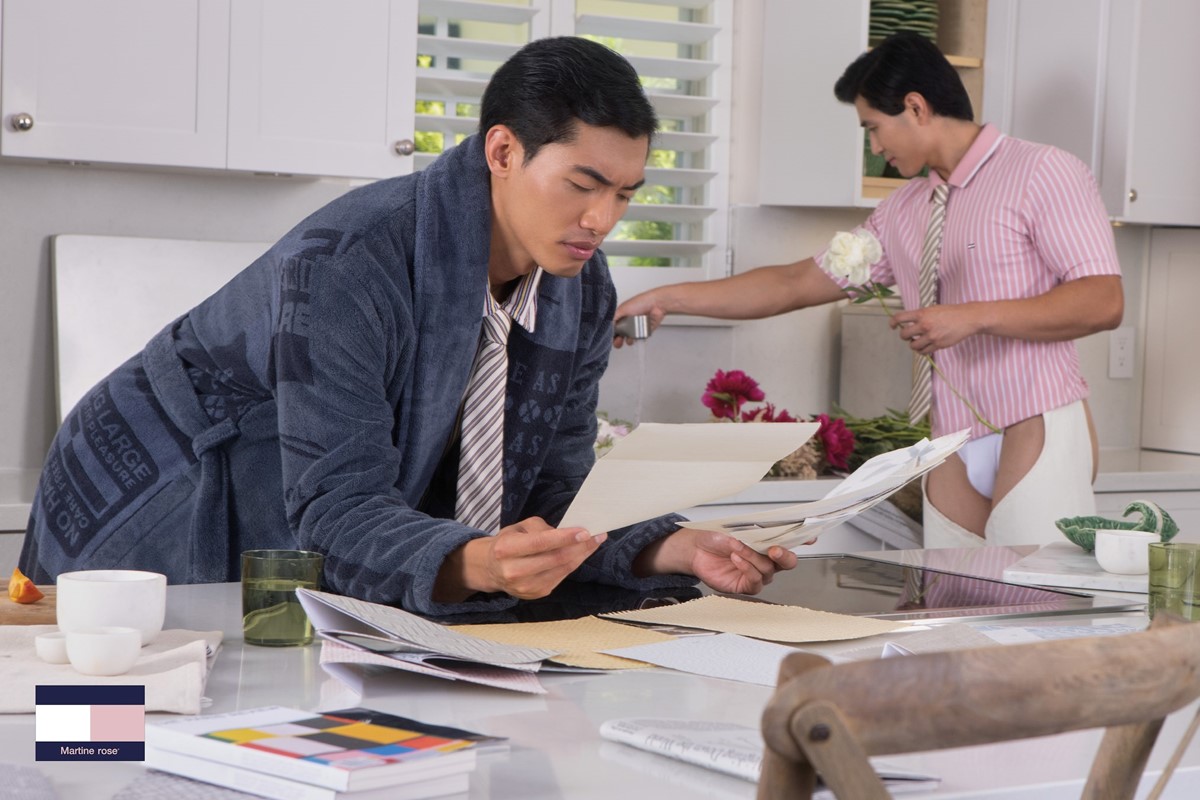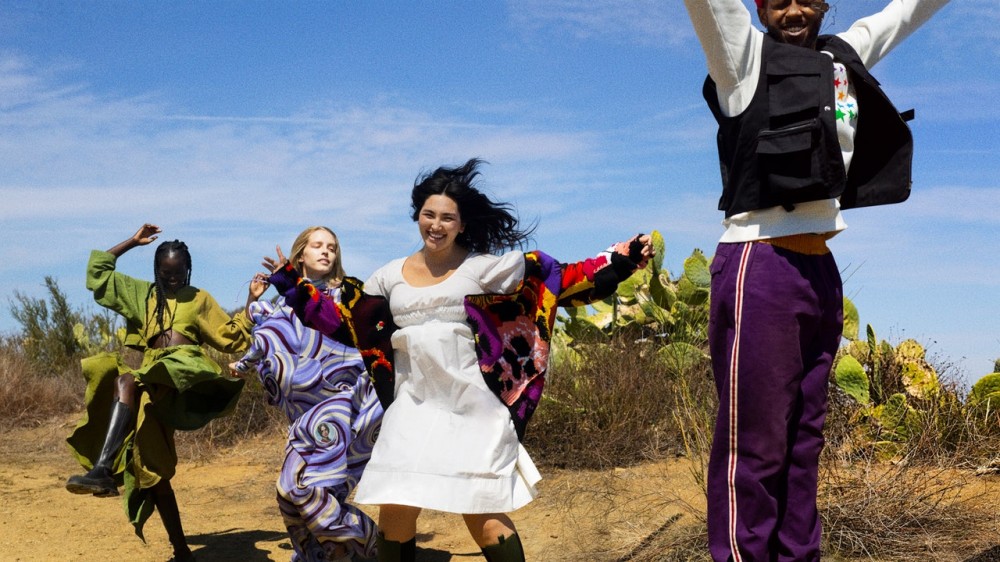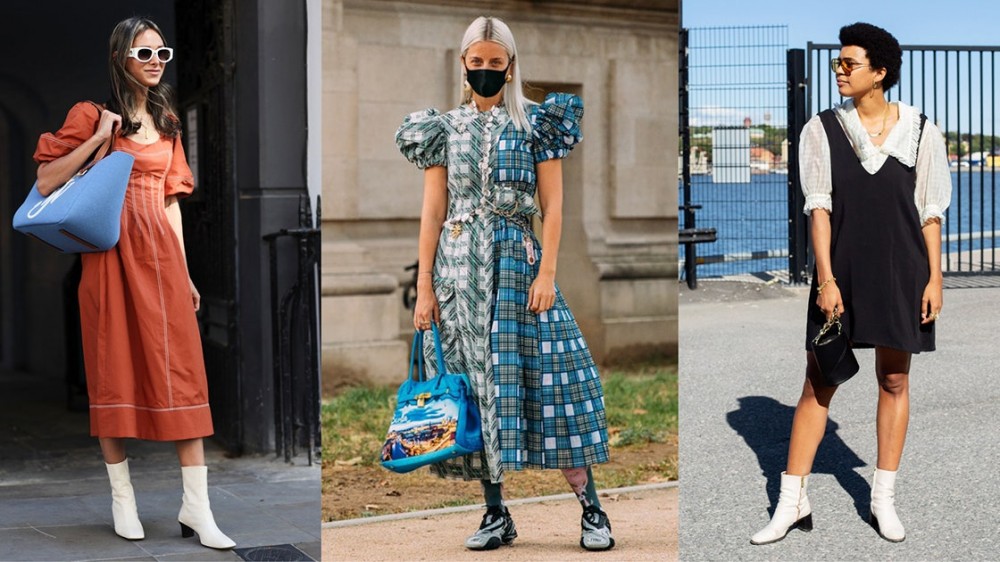
How Raf Simons created ‘babushka’ costumes for wild new opera Glass Handel
As the show lands at East London clubbing destination Printworks this weekend, co-creator Anthony Roth Costanzo discusses working with the legendary designer
Raf Simons has never been interested in sticking to the runway. As well as showing his eponymous label on the Paris catwalk each season, and working alongside Mrs. Prada in Milan, the Belgian iconoclast is well known for having his fingers in a lot of creative pies. As well as collaborating with artist Sterling Ruby, British subculture behemoth Fred Perry, and chic textile makers Kvadrat, Simons has also dipped his toe into costume design on a number of occasions, after Luca Guadagnino enlisted him to create looks for Tilda Swinton in both I Am Love and A Bigger Splash – the first during his stint at Jil Sander, the latter while he was helming Dior.
It makes sense that Simons’ clothes would translate well to the screen. If you’ve ever been lucky enough to get up close and personal with his pieces, you’ll know that his garments are imbued with a sense of theatricality. Whether outerwear blown up to wild proportions from his own line or the meticulously crafted gowns of his modern couture at Dior, the designer’s more avant-garde clothes cause their wearer to move differently, more deliberately. It makes sense, then, that Simons has been tapped to contribute to Glass Handel – a new, contemporary opera that forms part of the BBC’s 2022 Proms series.




Taking over East London’s Printworks this weekend, Glass Handel brings together a series of legendary creatives, who “show the music of Handel and Phillip Glass through their lens,” says Anthony Roth Constanzo, countertenor and co-creator. Featuring dancing, film, soundscapes, and live painting, with names on the line-up including Tilda Swinton, artist Mickalene Thomas, and longtime Solange-collaborator Jacolby Satterwhite, the show is a way of bringing classical music to a new audience. Simons role? He’s adding another costuming credential to his CV, as he kits out Glass Handel’s dancers in a series of specially commissioned looks.
“There is no set for Glass Handel, so the costumes are the architecture of the piece,” says Constanzo. “They draw your eye around the space and really are the unifying thread, along with the music, of the entire experience. The luxury of the fabrics, the intricacy of the construction, the ingenuity of the design, it all contributes to how the audience perceives the music both aesthetically and emotionally.” Originally introduced by a mutual friend who thought they may enjoy working together, Constanzo and Simons’ first meeting descended into an almost eight-hour long conversation in which the designer dug into the minutiae of a performance such as this. “Raf wanted to know every detail imaginable. How does an oboe player move their arms? What about a cellist? How could he create a garment that wouldn’t constraint either.”

As Simons signed up to take the project on, Constanzo was shocked by just how hands on he was. “He wanted to know if I could sing wearing four-inch heeled boots. I said I wasn’t sure, so he sent me a prototype pair to Japan where I was singing and I walked around my hotel room practising in them. It wasn’t easy, but I could do it.” Then came the in-person fittings. “I couldn’t believe how much time and care Raf devoted to everything personally,” the countertenor adds. “In one fitting that I remember lasting almost seven hours(!) he sat and cut a beautiful flower by hand out of satin and arranged it on the nape of the neck of one of my dresses. He kneeled on the floor beside the dancers with a pair of scissors, and precisely snipped the pom-pom elements to match their heights and bodies.”
Though the final looks are being kept under wraps until their debut tomorrow (Saturday 3 September), Constanzo offers up a little titbit in terms of what to expect: “I think the huge red bubble dress with hot pink gloves and rhinestone studded high heels that I enter in is an iconic couture look that screams Raf and opera simultaneously.” For anyone wanting to see it in person (and after that description, how could you not?), tickets are still available here, while below, Constanzo discusses the collaboration with Simons in more detail – from the first moment he became aware of his work, to meeting him for the first time, to the ‘babushka doll’ creation the designer crafted for his character.
“Raf wanted to know every detail imaginable. How does an oboe player move their arms? What about a cellist? How could he create a garment that wouldn’t constraint either” – Anthony Roth Costanzo
When did you first become aware of Raf Simons and his work?
Anthony Roth Costanzo: Right after college, living downtown in New York City, I started to become friends with all kinds of artists, including some photographers who worked in fashion. They followed Raf’s work with a kind of reverence and ardour that compelled me to investigate him myself. I quickly became a fan, first of his elemental work with Jil Sander, and then later of his Haute Couture at Dior. Of course his eponymous brand has always been pushing the boundaries, and it was an inspiration to me that he seemed to have so many ideas and could apply them to such disparate aesthetics.
Can you tell me a little bit about how the collaboration with Raf came about?
Anthony Roth Costanzo: When first developing Glass Handel, I worked closely with the superstar artist George Condo, who painted my portrait for the cover of the CD. He was friendly with Raf and suggested that Raf might enjoy collaborating on an artistic project like the one I was trying to create. The first time we met was at George’s apartment, and we spent nearly eight hours talking – Raf wanted to know every detail imaginable. How does an oboe player move their arms? What about a cellist? How could he create a garment that wouldn’t constraint either.
Why did you want to work with him on the costumes?
Anthony Roth Costanzo: I think anyone in their right mind would want Raf to work on costumes! But in a broader sense, the whole concept behind Glass Handel is to take music I make and let great artists interpret it in their own medium. Preconceptions and structure around the classical idiom can make it feel uninviting, and yet I believe the music itself connects to so many people, whether they have previous experience with it or not. With the fashion element, we wanted to create an exciting point of access for someone not familiar with this music that could jumpstart a connection. I can’t imagine a more alluring way in than Raf’s visual interpretation.

What were the points of reference, what was on the moodboard? Did you dive into his archives or did he create something new entirely?
Anthony Roth Costanzo: I really think that the music was the moodboard; in this case it was auditory and not visual. It was a kind of synesthetic creative process that way. But Raf was also very inspired by the practical constraints – something I loved to experience. He wound up tearing the sleeves off of all the orchestra’s jackets so they could move freely, creating this very rough and tumble look that was dissonant with a smooth, refined, red satin lapel. I never leave the stage, so he created a babushka doll concept for me in which I would layer three dresses on top of each other that could slowly peel off, each its own striking colour and shape.
For performers moving around the space, he designed special rubber shoes that wouldn’t make any noise as they walked during the performance so as not to disrupt the music. Every element was chosen for a reason. Most things were new ideas, but he repurposed some techniques he had used previously, for example he had created pom-pom dresses in the past, and he liked how the movement of these hanging strings could work for the dancers, so he adapted that technique to create costumes for them that are constantly shifting, revealing the shapes their body make one minute, and complicating them the next.
What was the process like?
Anthony Roth Costanzo: After several initial brainstorming sessions, Raf made drawings and sent them to me and my co-producers. We looked at the practicalities carefully. For example, he wanted to know if I could sing wearing four-inch heeled boots. I said I wasn’t sure, so he sent me a prototype pair to Japan where I was singing and I walked around my hotel room practising in them. It wasn’t easy, but I could do it. Then we had a series of incredible in-person fittings.
I couldn’t believe how much time and care Raf devoted to everything personally. In one fitting that I remember lasting almost seven hours(!) he sat and cut a beautiful flower by hand out of satin and arranged it on the nape of the neck of one of my dresses. He kneeled on the floor beside the dancers with a pair of scissors, and precisely snipped the pom-pom elements to match their heights and bodies. He wanted to screen-print the words “Glass Handel” on my second dress, but he wasn’t sure of the right font or the right placement, so he had several transparencies made and we looked at each and every one in different positions until we found what we thought was right. You can’t imagine the thrill of seeing any artist, particularly one of his renown, putting that much of themselves into a creative process.
“In one fitting that I remember lasting almost seven hours(!) he sat and cut a beautiful flower by hand out of satin and arranged it on the nape of the neck of one of my dresses. He kneeled on the floor beside the dancers with a pair of scissors, and precisely snipped the pom-pom elements to match their heights and bodies” – Anthony Roth Costanzo
How did having Raf create the costumes enhance the show?
Anthony Roth Costanzo: There is no set for Glass Handel, so the costumes are the architecture of the piece. They draw your eye around the space and really are the unifying thread, along with the music, of the entire experience. The luxury of the fabrics, the intricacy of the construction, the ingenuity of the design, it all contributes to how the audience perceives the music both aesthetically and emotionally.
Do you have a favourite look from the show?
Anthony Roth Costanzo: I think the huge red bubble dress with hot pink gloves and rhinestone-studded high heels that I enter in is an iconic couture look that screams Raf and opera simultaneously.
Through Glass Handel, you aim to bring the Proms and classical music to a new audience. Why is this so important to you?
Anthony Roth Costanzo: Classical music can provide an emotional catharsis and a spectral beauty for anyone, regardless of how much they know about it. Not only am I passionate about bringing this music to new audiences, but I am hungry for the narratives that their presence contributes to the music. Performing is a constant interaction; we respond to the audience we have, we reflect their sensibility in our choices, and ultimately we try to spin their stories in our art.
You have Glass Handel and working with Raf Simons under your belt now. If you could work with another designer on a future production, who would you choose and why?
Anthony Roth Costanzo: I am over the moon to be working with another spectacular designer, Jonathan Anderson, on a show I created with Justin Vivian Bond called Only an Octave Apart, which comes to London for a month-long run at Wilton’s Music Hall at the end of September. He is totally prolific, and yet each and every thing he makes – seemingly hundreds of items each day! – are well hewn, stunning pieces. I am thrilled that our show represents his first foray into making costumes for a show.




